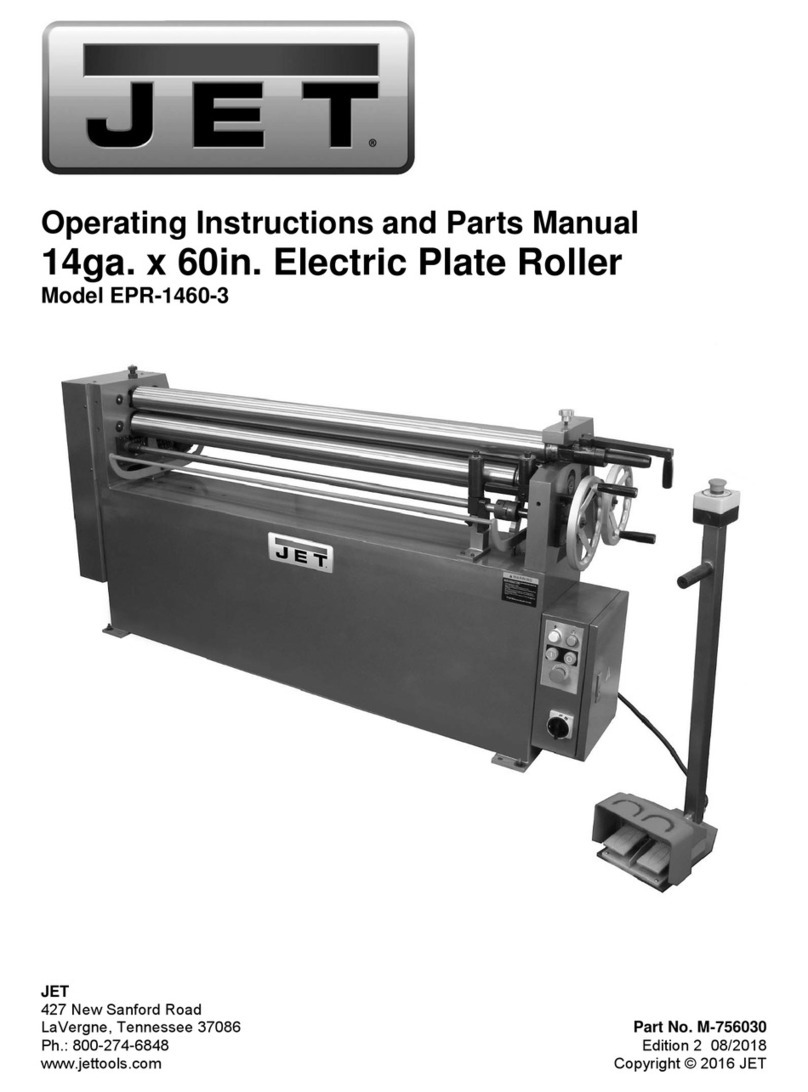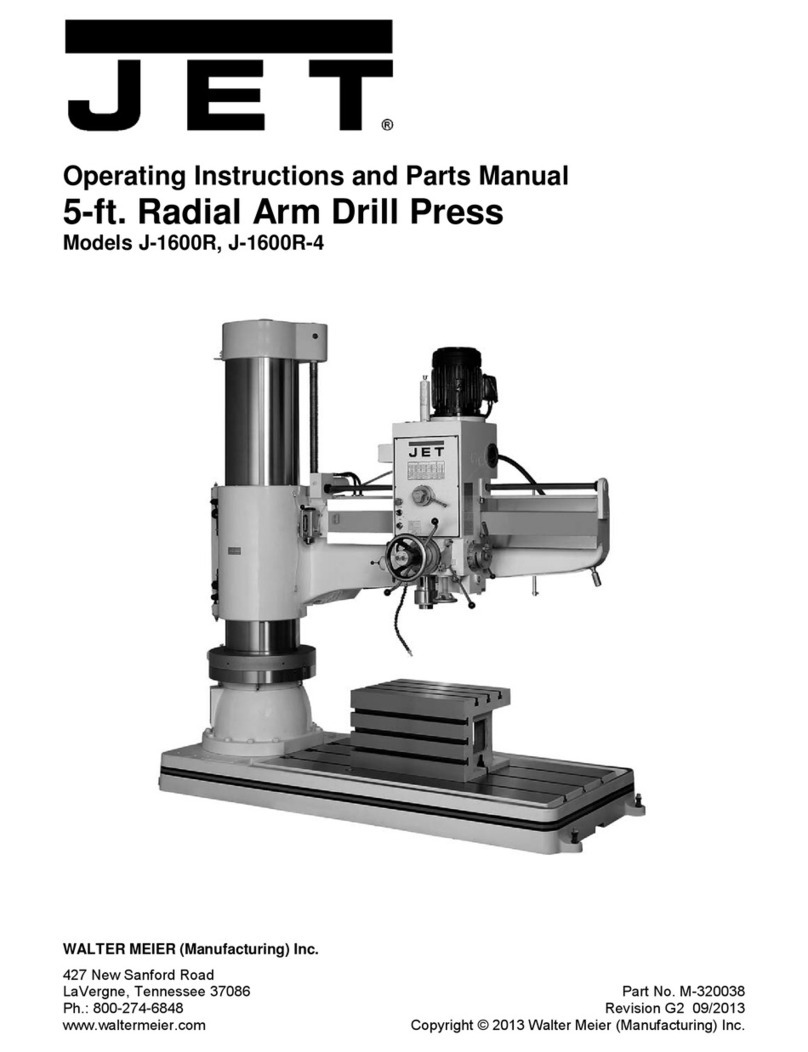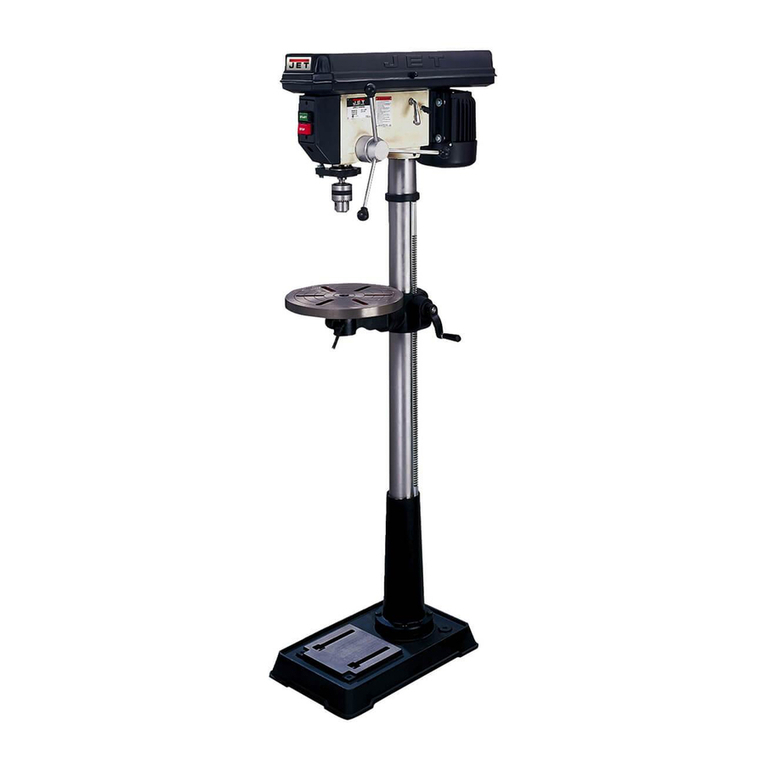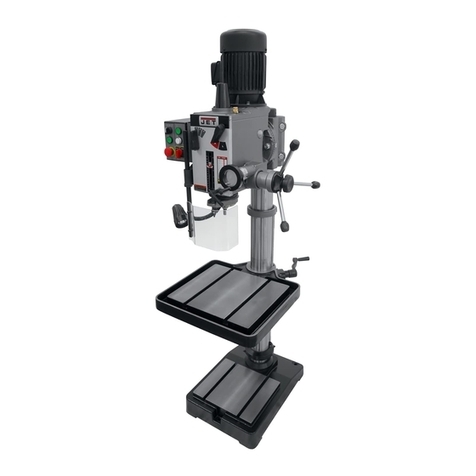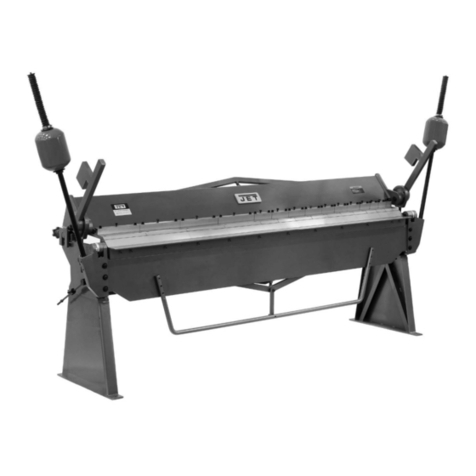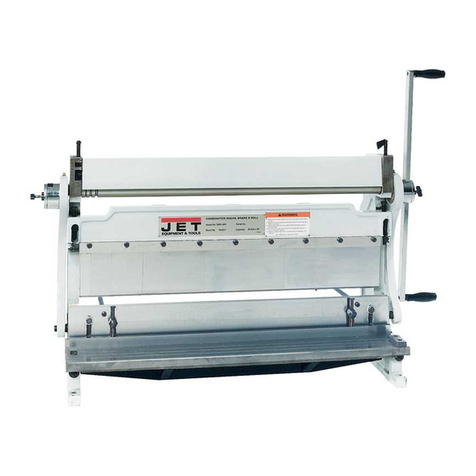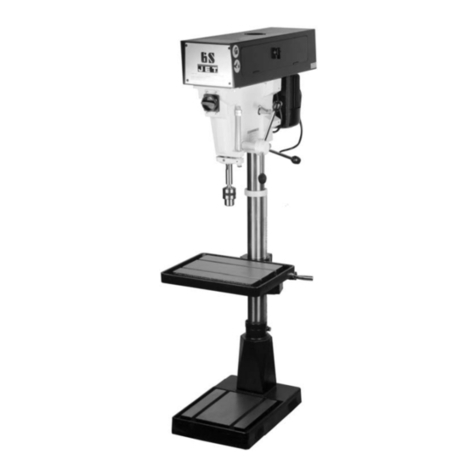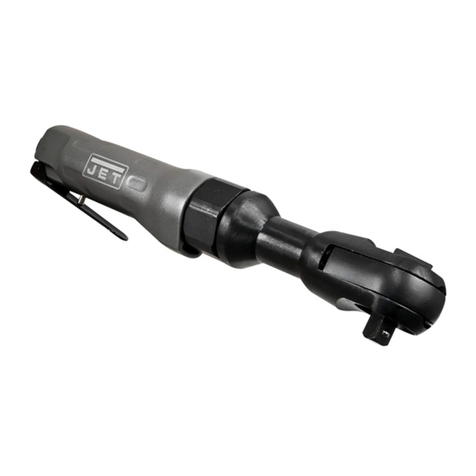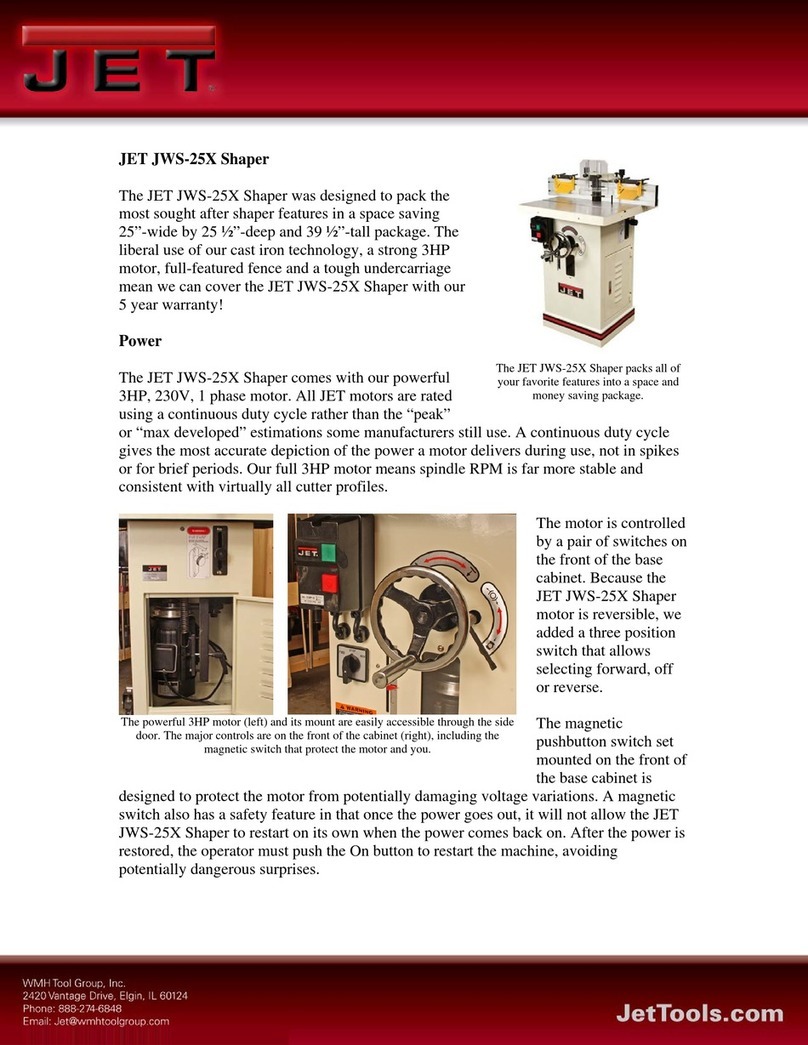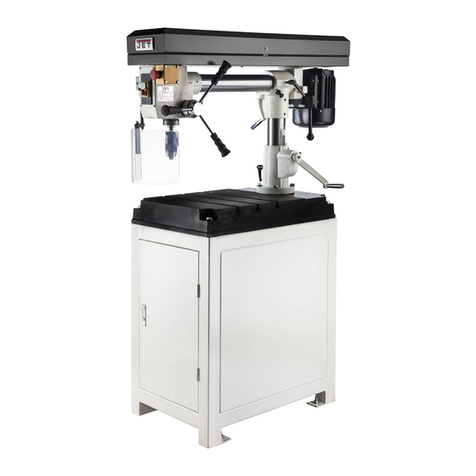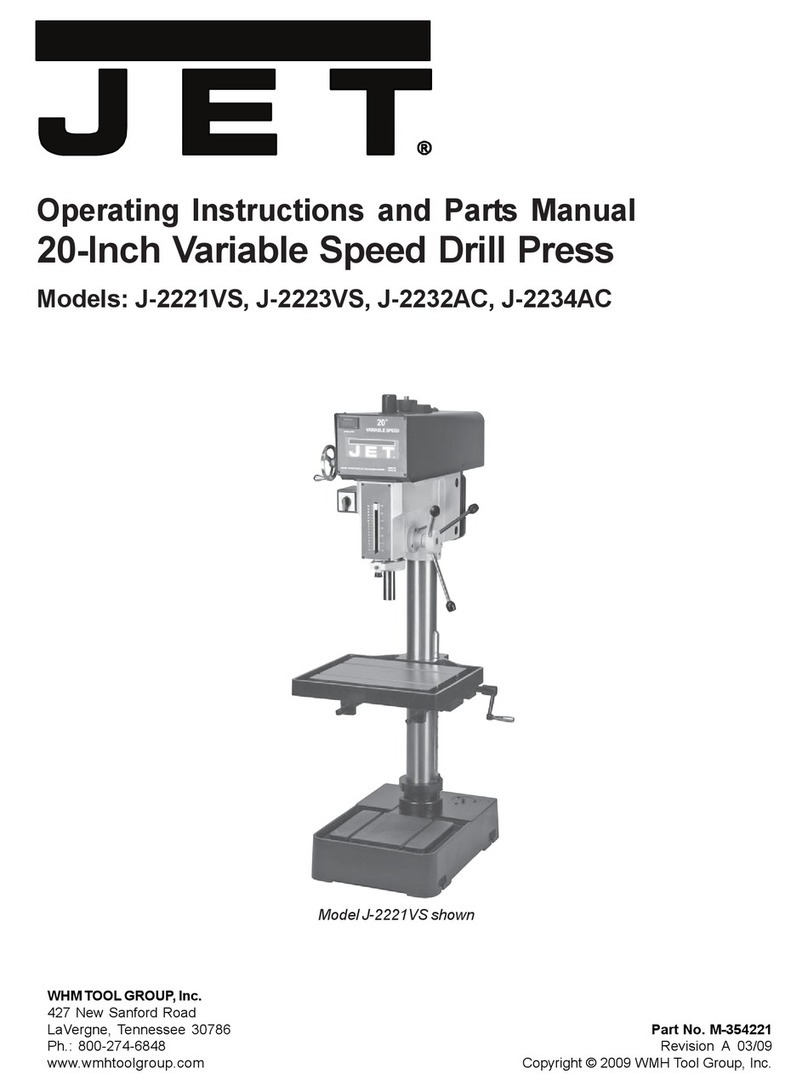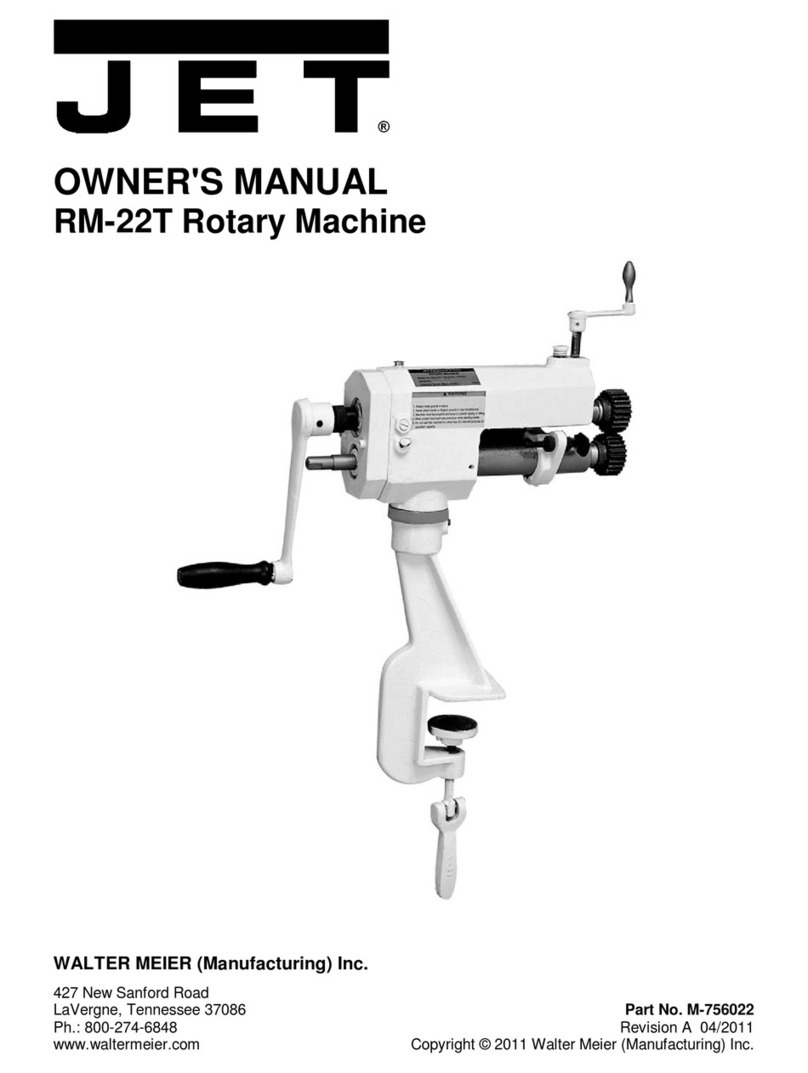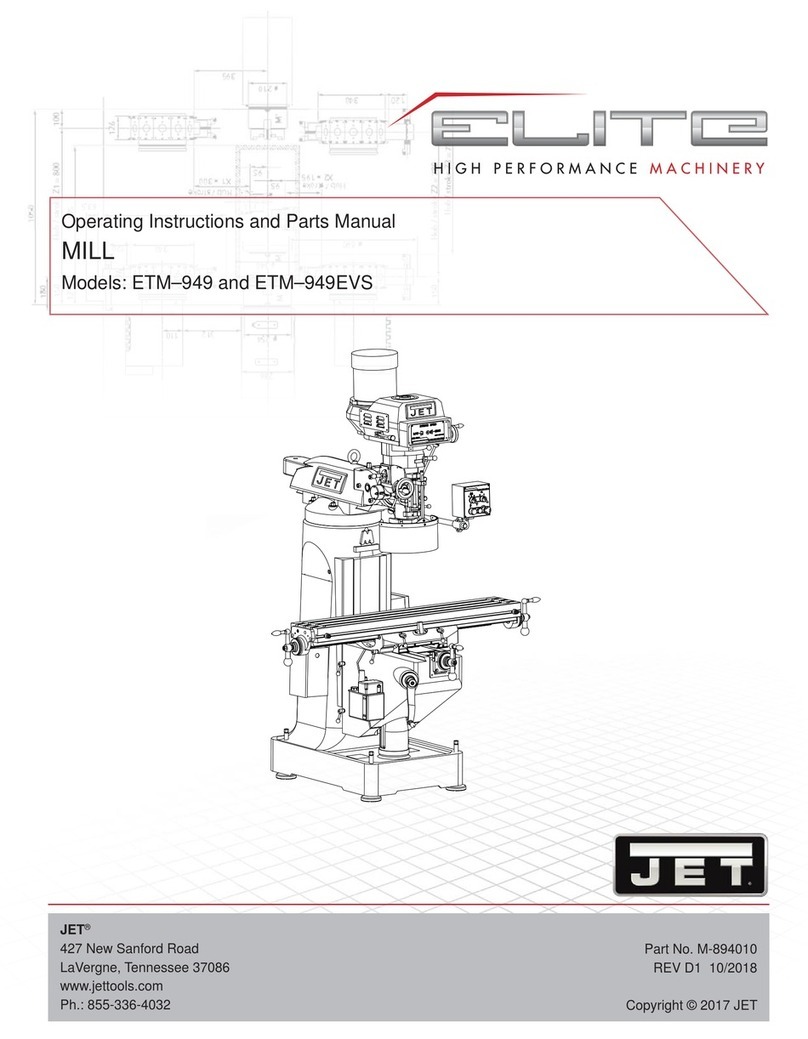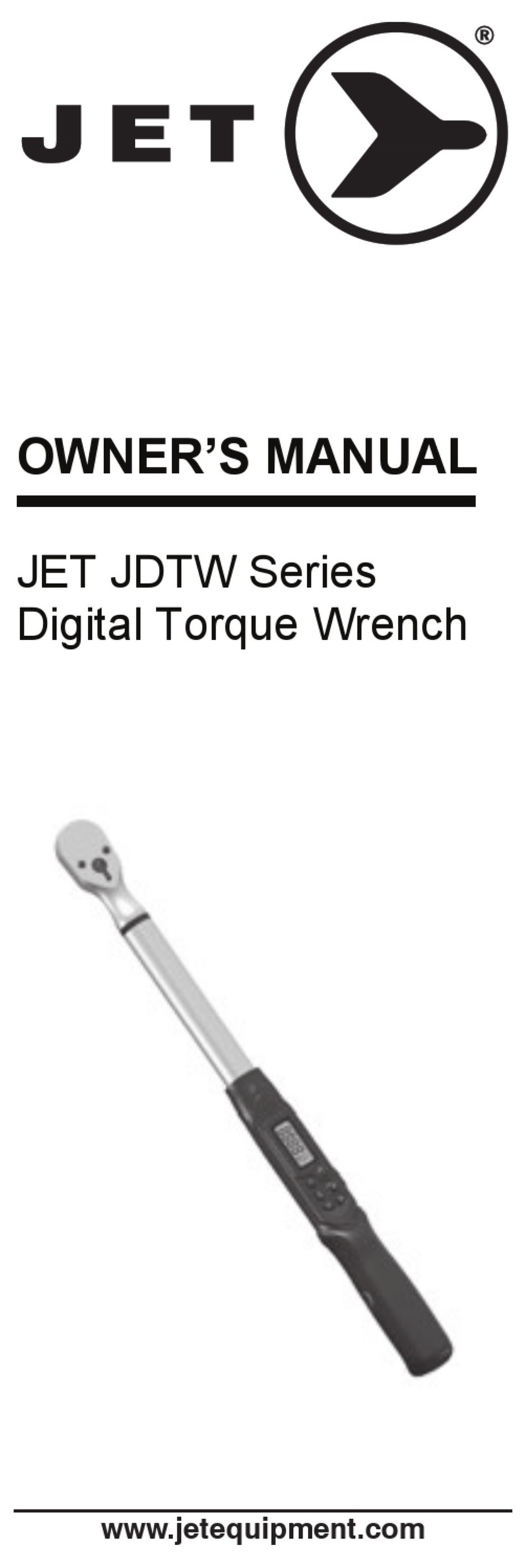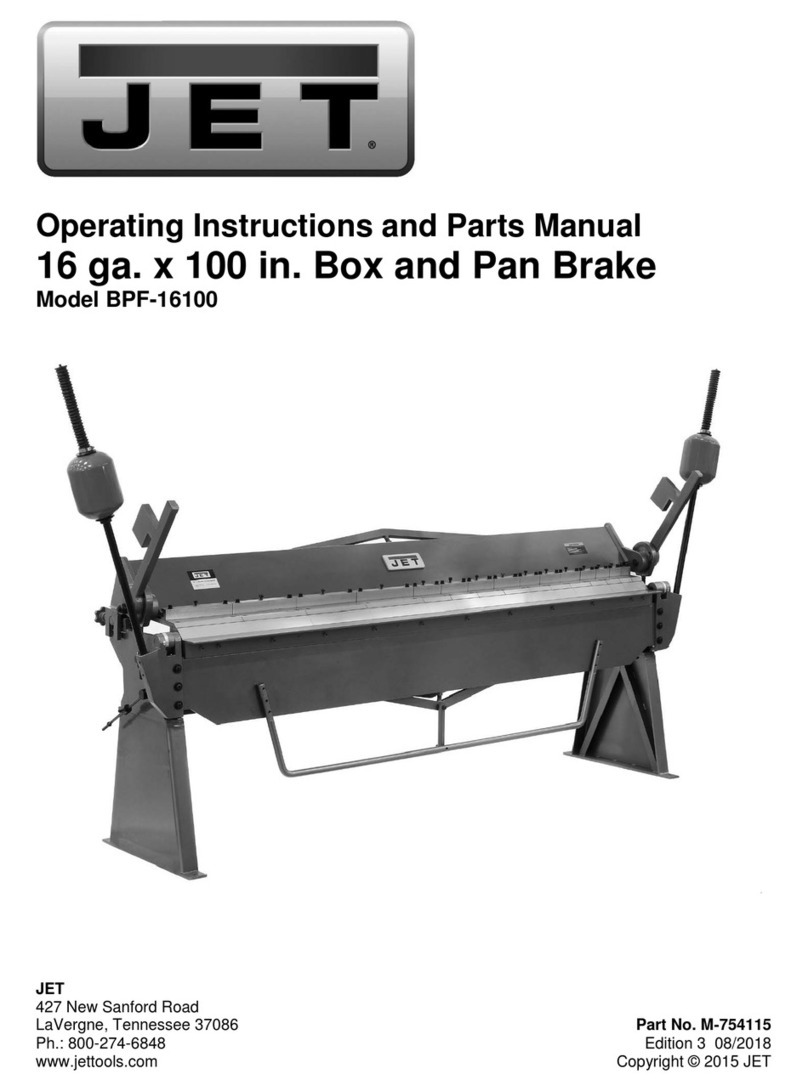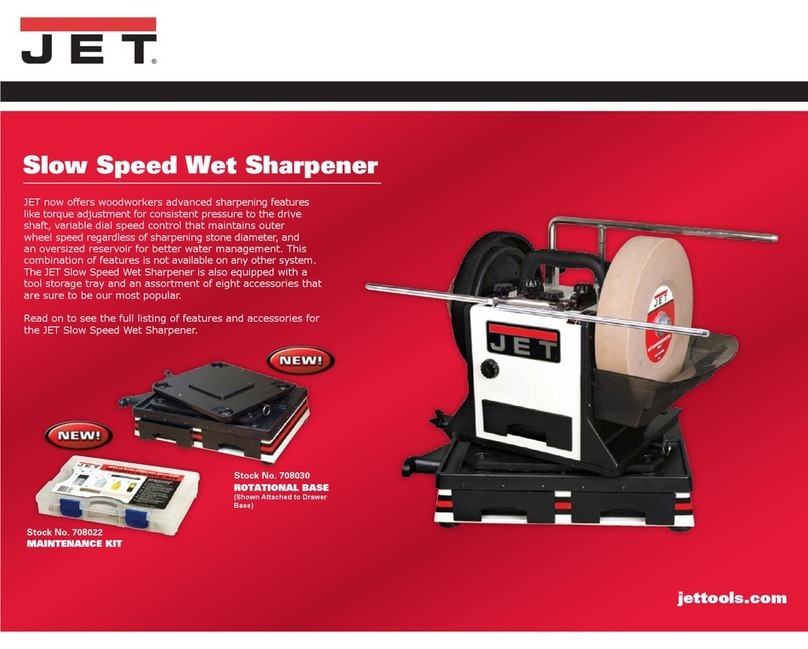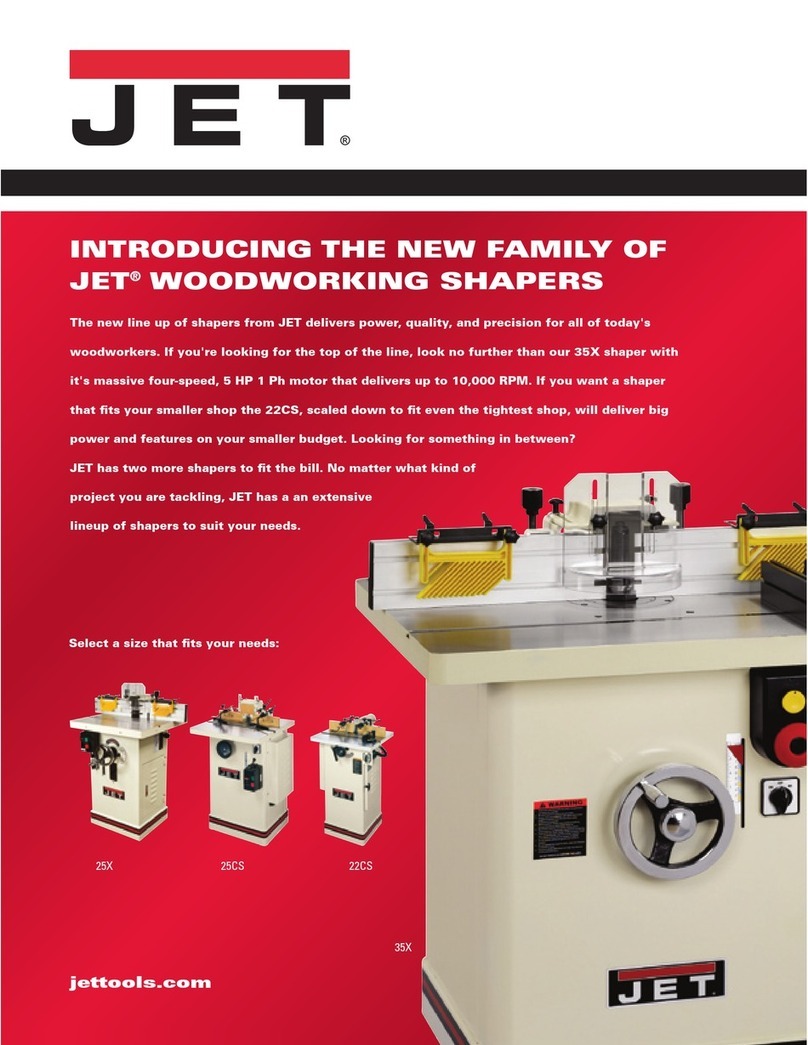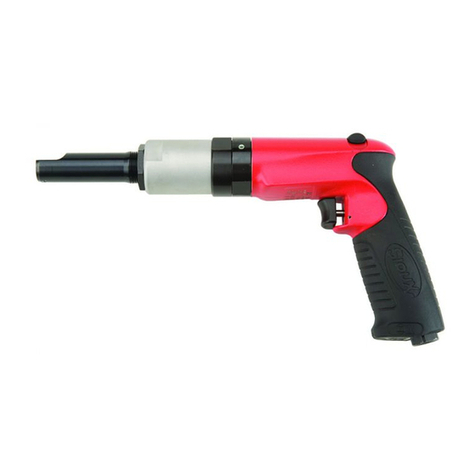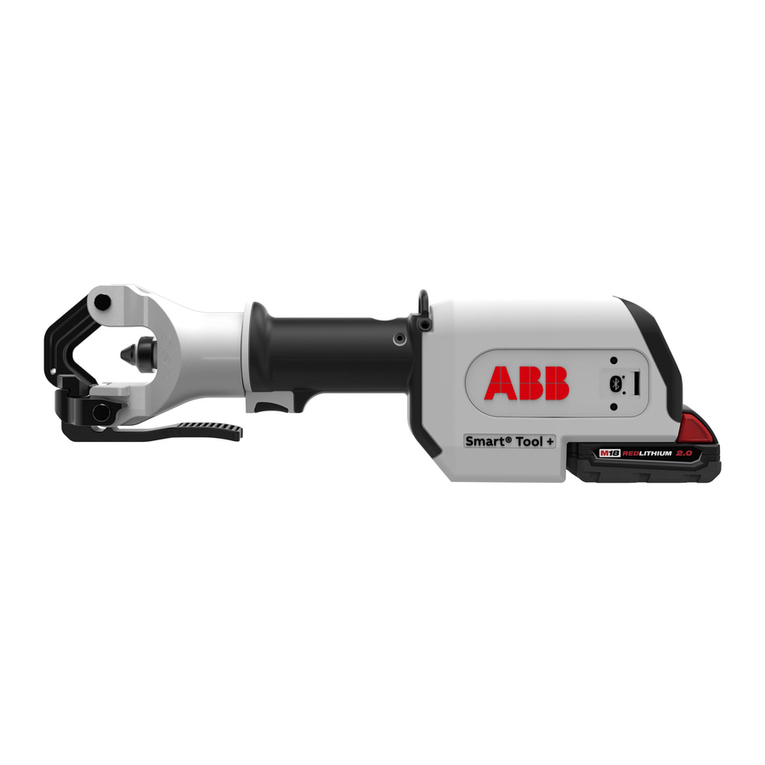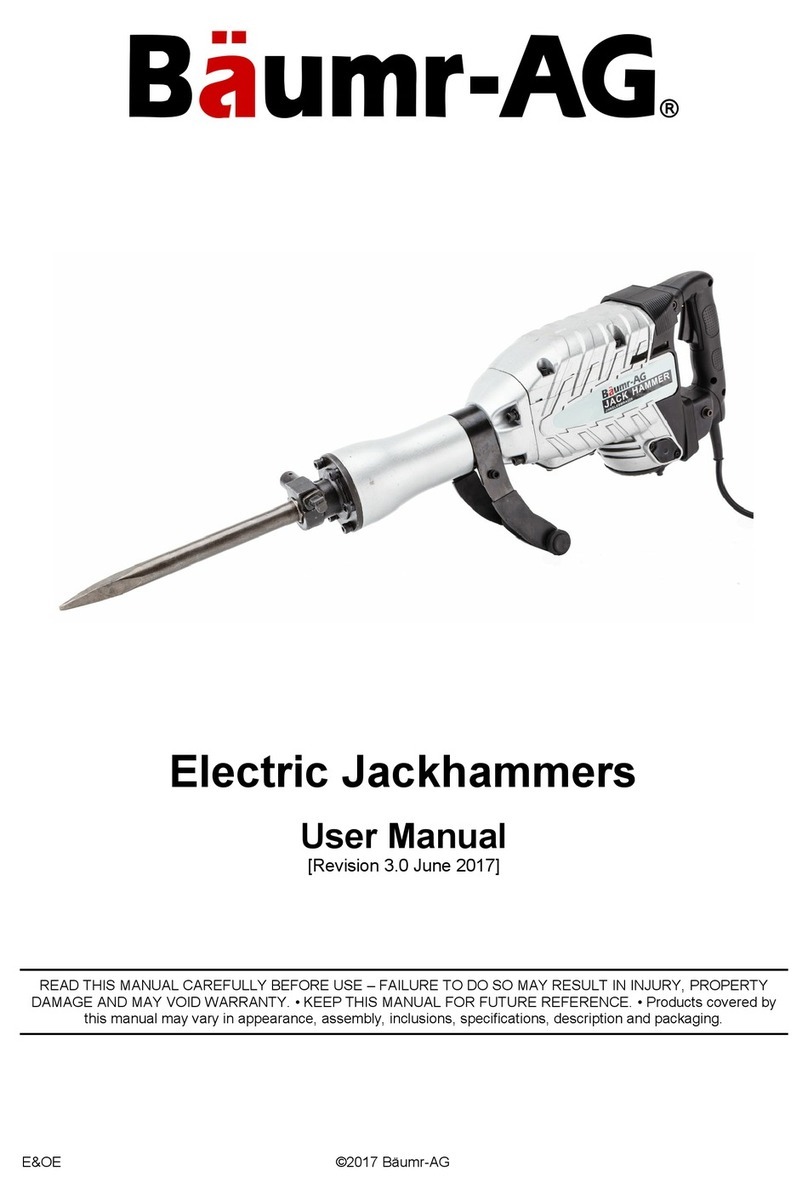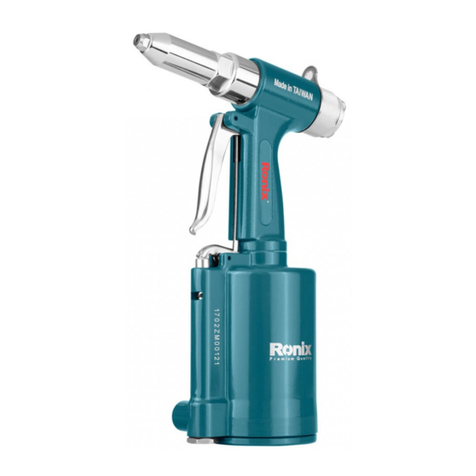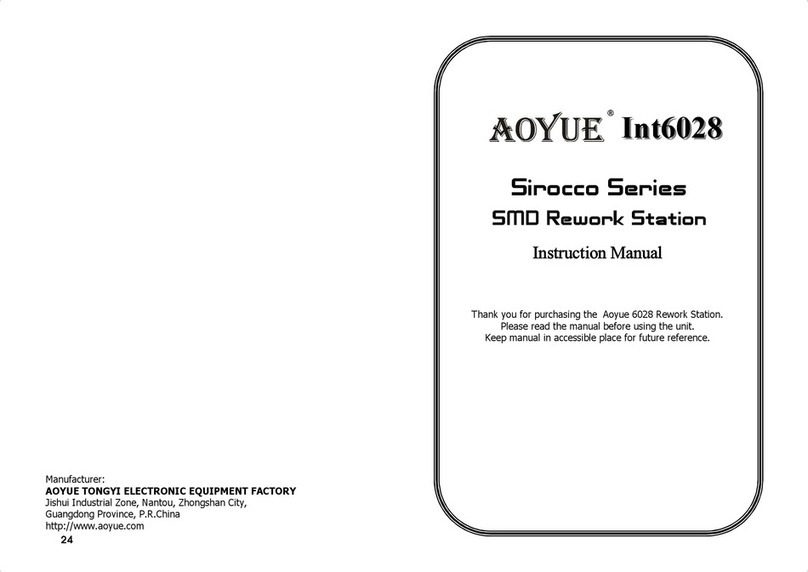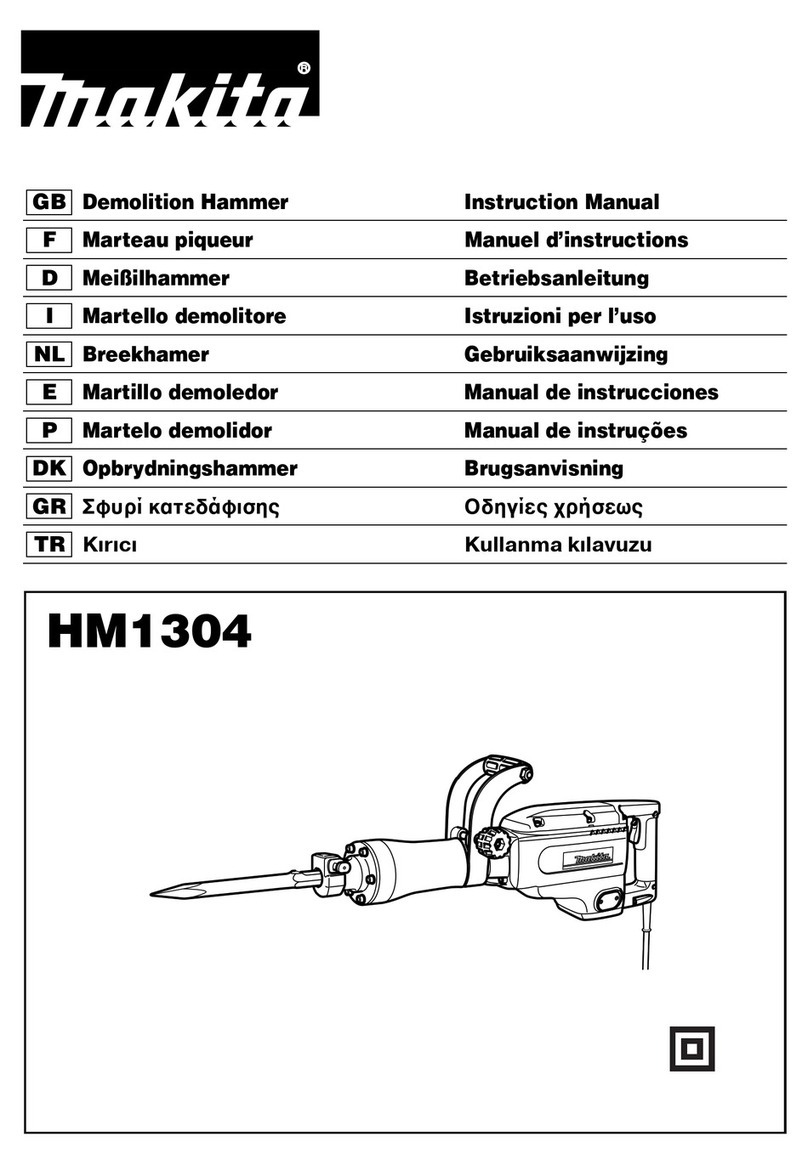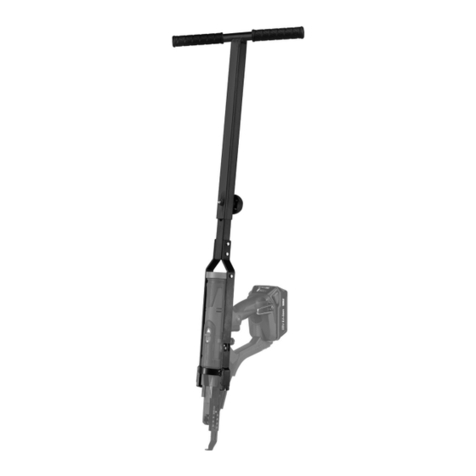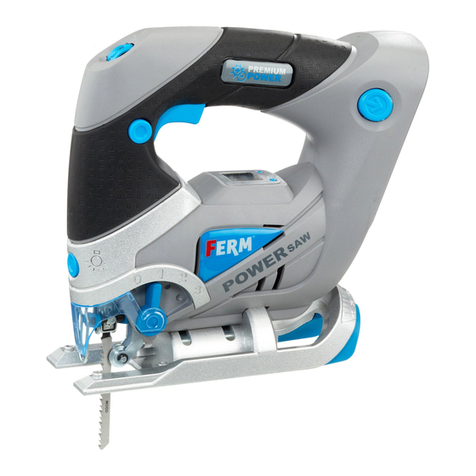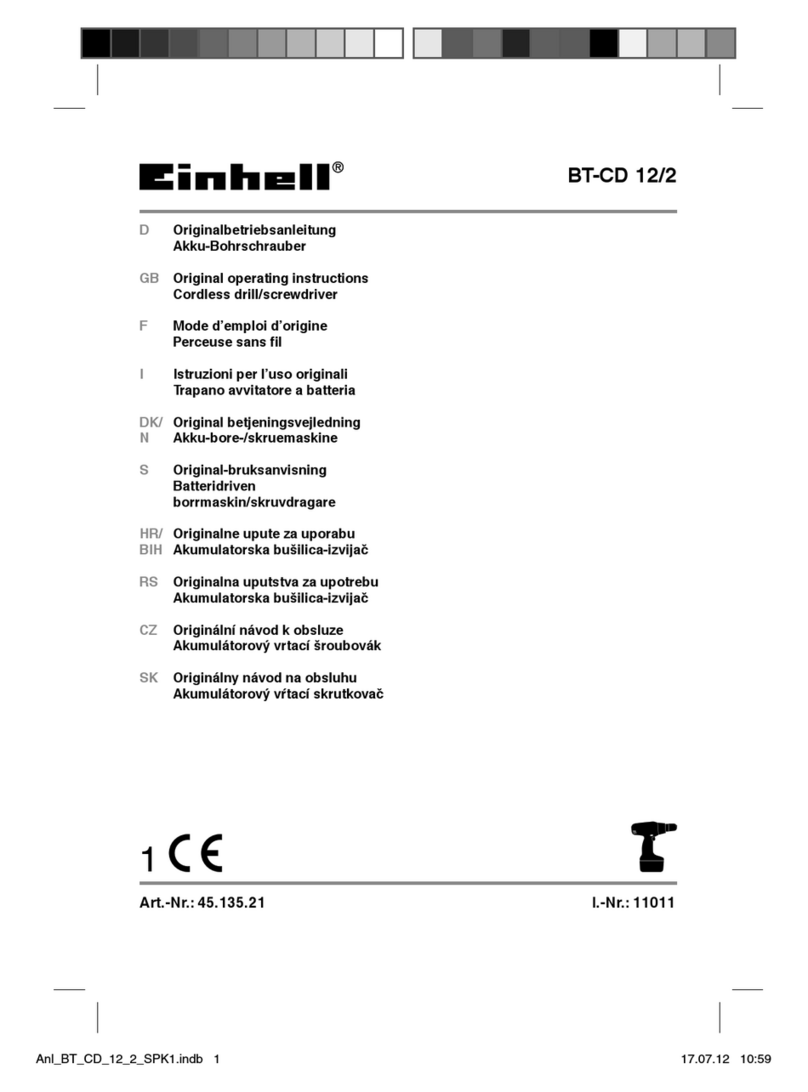
Do not remove chips and work piece parts until the machine is
at a complete standstill.
Do not remove chips or debris with your hands - use a brush
or chip hook.
Be careful when changing drill bits. Drill bits are sharp edged
and can get very hot during machining.
Work only with well sharpened tools.
Do not start the drill press while the cutting tool is in contact
with the workpiece.
Do not force the power tool. It will do a better and safer job
and give you much better service if it is used at the rate for
which it was designed.
Specifications regarding the maximum or minimum size of the
workpiece must be observed.
Never place your fingers in a position where they could
contact the drill or other cutting tool if the work piece should
unexpectedly shift or your hand should slip.
Machine only stock which is securely supported.
Secure workpiece against rotation. Use fixtures, clamps or a
vice to hold the workpiece.
Never hold the workpiece with your hands alone.
To clamp workpiece to the table, use the table slots or
clamping ledge around the outside of the table.
When using a drill press vice, always fasten it to the table.
If a work piece overhangs the table such that it will fall or tip if
not held, clamp it to the table or provide auxiliary support.
Do not use wire wheels, router bits, shaper cutters, circle
cutters and grinding discs on this drill press.
Make sure, drill bit and table are securely locked before
operating the drill press.
Never move the table while the machine is running.
Do not stand on the machine.
Do not operate the machine with the safety equipment not in
place –high safety risk!
Connection and repair work on the electrical installation may
be carried out by a qualified electrician only.
Always unwind any extension cords fully.
Have a damaged or worn power cord replaced immediately.
Do not use the machine when the ON-OFF switch does not
operate correctly.
The use of accessories other than those recommended in this
manual can create a safety hazard.
To avoid injury from parts thrown by the clock spring, follow
instructions exactly as given when adjusting the return spring
tension of the quill.
Do not stare into beam of cross laser
Do not view directly with optical instruments
Do not point the laser beam at people or animals.
Do not use the laser beam on highly reflective materials.
Reflected light is dangerous.
A defective laser beamer may be replaced only, not repaired.
3.3 Remaining hazards
When using the machine according to regulations some
remaining hazards may still exist.
The rotating drill bit can cause injury.
Thrown workpieces and workpiece parts can lead to injury.
Tipping of the workpiece due to insufficient support can lead
to injury.
Dust, chips and noise can be health hazards. Be sure to wear
personal protection gear such as safety goggles, ear
protection and dust mask.
Assure good ventilation.
Use a suitable dust collection or air filtration system.
The use of incorrect mains supply or a damaged power cord
can lead to injuries caused by electricity.
4. Machine specifications
4.1 Technical data
Mains 230V ~1L/N/PE 50Hz
Motor Output Power 0.55kW (0,75 HP) S1
Reference current 3.7 A
Laser class 2 <1mW, 650nm
Work light LED
Extension cord (H07RN-F): 3x1,5²mm
Installation fuse protection 10A
Insulation class I
Mains 400V ~3L/N/PE 50Hz
Motor Output Power 0.55kW (0,75 HP) S1
Reference current 1,6 A
Laser class 2 <1mW, 650nm
Work light LED
Extension cord (H07-F): 5x1,5²mm
Installation fuse protection 10A
Insulation class I
JDP-15B:
Number of spindle speeds 16
Range of speeds 180 - 2900 rpm
Spindle taper MT2
Keyless chuck (arbor MT2/B16) 1-16mm
Spindle travel 80mm
Quill diameter 47mm
Distance spindle to column 190mm
Distance spindle to table max 471mm
Distance spindle to base 683mm

